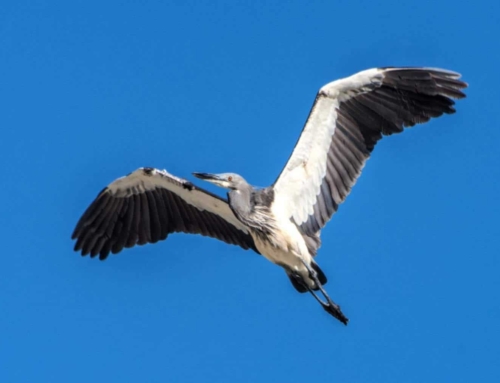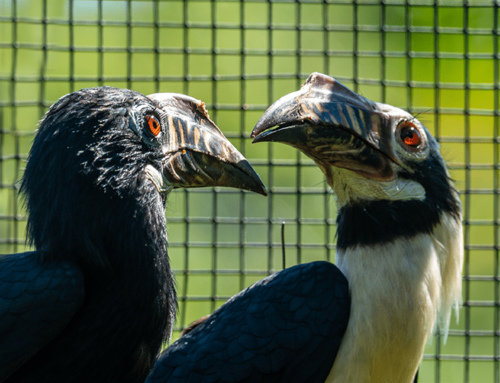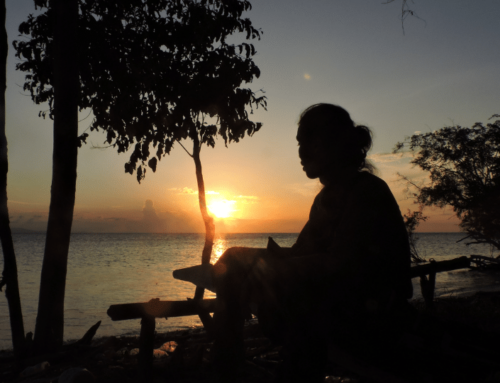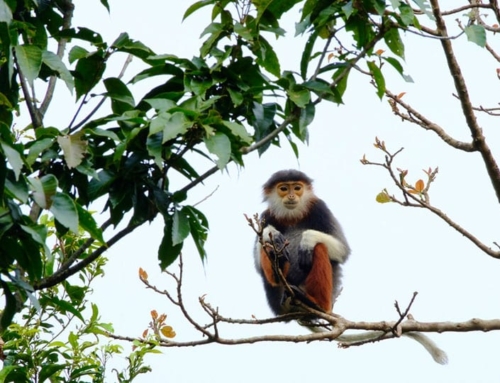Conservation Research Analyst Anna Heath on how a camera trap set up to capture images of one of the world’s most iconic species, the tiger, may help in the battle to save one of the world’s least well-known, the White-bellied Heron.
Earlier this month, I arrived at work to a flurry of excited emails lining my inbox, filled with exclamation points, smiley faces, and words of hope and enthusiasm. Looking at subject lines like “Good news!” and “potentially massive new record…”, I excitedly started clicking through the online discussions that had been going on overnight between researchers across the UK, the US, India and Bhutan.
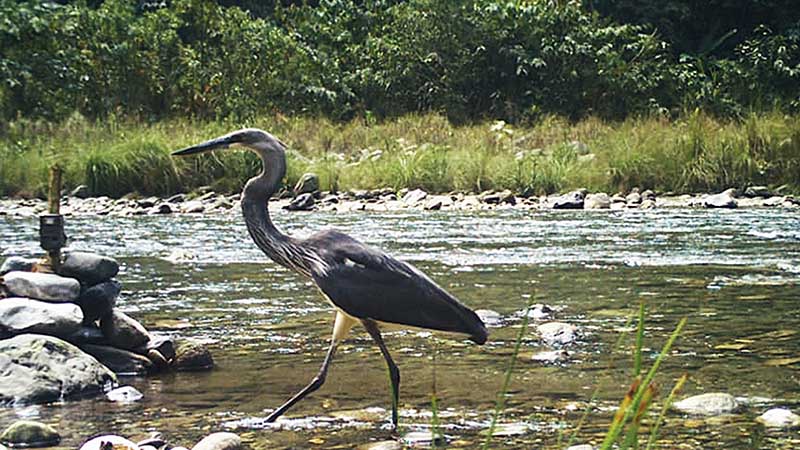
White-bellied Heron caught in a camera trap set up to photograph tigers. Image: Kamlang Tiger Reserve
The cause of all this excitement? The news that a camera trap in Northeast India had ‘accidentally’ captured a picture of a very rare species of bird, the White-bellied Heron (Ardea insignis).
The picture was captured on the banks of the Tawa river in Kamlang Tiger reserve, by a camera which was set up to ‘catch’ tigers. These camera traps are part of the extensive monitoring and conservation work which takes place across India to protect the emblematic tiger. In a rather stark contrast to this, work on the White-bellied Heron has been sporadic at best, with very little funding or attention being paid to the conservation of this little-known, but Critically Endangered species.
But to really understand the value and meaning of this picture, we need to delve a bit deeper into the web of conservation challenges surrounding the White-bellied Heron.
The challenge of conserving the White-bellied Heron
The White-bellied Heron is classified as Critically Endangered on the International Union for Conservation of Nature (IUCN) Red List, and there are believed to be just 50-250 mature individuals of this species left in the world. A common problem across most species with such small populations is that we also know very little about them and how they live. When details such as breeding habits, what they eat, what kind of habitat they like, and the biggest threats to their survival are all missing, protecting wild populations becomes incredibly difficult.
One of the key things we don’t know about the White-bellied Heron is where it lives. While a few populations are known about, there are vast swathes of potential habitat covering over 250,000 square kilometres across Bhutan, China, India and Myanmar that could be home to the species.
Within this area, it has proven extremely difficult to locate the White-bellied Heron. This species is largely solitary, occurs at low density, and is quick to fly away at the approach of a human – all characteristics that make it very hard to find.
A plan to find the species
Synchronicity Earth began our engagement with the White-bellied Heron in 2014, after our scoping in the region identified this as a species of extreme need receiving very little conservation action. We co-hosted and funded a species conservation planning workshop in India in 2014 which led to the creation of the first official conservation strategy for the species, and a dedicated working group within the IUCN. Since then, Synchronicity Earth has continued to support this group, both through funding, and providing staff time from our team to coordinate the working group. Over this time period we have helped organise and fund workshops, research and survey work, and training and capacity-building initiatives for the species.
The most recent of these was a workshop aimed at prioritising where to look for the White-bellied Heron. Given the vast potential area and difficulty in actually finding the species, it is a key priority to focus in on the sites that are most likely to be successful.

A successfully tagged White-bellied Heron, Bhutan. Image © Lubomir Peske
The workshop brought together a small group of people who have experience of seeing or studying White-bellied Heron in the wild to carry out a kind of ‘analogue modelling’. This involved close examination of satellite imagery and extraction of knowledge from everyone in the room about any possible habitat preference details. This unique methodology produced about a dozen key sites which were most likely to be home to a White-bellied Heron population in Northeast India.
Right place, right time
Which brings us back to the all-important snap of the White-bellied Heron from the tiger camera trap in Northeast India. The most exciting thing about this photo was not that this was this the first known recording of a White-bellied Heron on a camera trap, nor that it was a new location for the species, but that this location was inside the top priority site identified by the mapping workshop which took place just weeks earlier! This photo therefore serves to not only direct further research for the species, but is also a beautifully serendipitous piece of evidence to support an innovative conservation solution.
It has been a long time since the dedicated people working to protect this species have had a piece of good news like this. Without their dedication, the White-bellied Heron may have become just another species slipping, almost unnoticed, into extinction. As it is, this new sighting gives fresh hope that the species can survive and thrive, so we would like to thank everyone from the White-bellied Heron working group, especially those that participated in the recent workshop. Here’s hoping that upcoming surveys can expand our understanding of where this species lives and how we can protect it.

